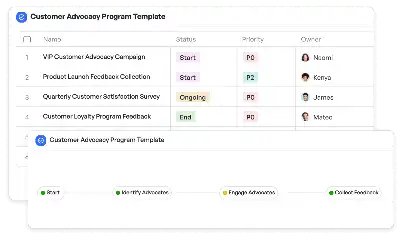Continuous Integration Best Practices
Achieve project success with the Continuous Integration Best Practices today!

What is Continuous Integration Best Practices?
Continuous Integration (CI) Best Practices are a set of guidelines and methodologies designed to streamline the software development process by integrating code changes frequently and automatically testing them. This approach ensures that code changes are validated early and often, reducing the risk of integration issues. In the context of modern software development, CI is crucial for maintaining code quality and enabling rapid delivery of features. By adhering to best practices such as maintaining a single source repository, automating builds, and running comprehensive tests, teams can ensure that their CI pipelines are robust and efficient. For example, a development team working on a large-scale e-commerce platform can use CI best practices to ensure that new features, such as payment gateway integrations, are seamlessly incorporated without disrupting existing functionalities.
Try this template now
Who is this Continuous Integration Best Practices Template for?
This Continuous Integration Best Practices template is ideal for software development teams, DevOps engineers, and project managers who are involved in building and maintaining CI pipelines. It is particularly useful for teams working in agile environments where frequent code changes and deployments are the norm. Typical roles that benefit from this template include software developers who need to ensure their code integrates smoothly, QA engineers who rely on automated testing to validate changes, and release managers who oversee the deployment process. For instance, a startup developing a mobile application can use this template to manage their CI pipeline, ensuring that new features are tested and deployed efficiently.

Try this template now
Why use this Continuous Integration Best Practices?
Using Continuous Integration Best Practices addresses several pain points in the software development lifecycle. One common challenge is the difficulty of identifying and resolving integration issues when multiple developers are working on the same codebase. This template provides a structured approach to integrating code changes frequently, reducing the risk of conflicts. Another pain point is the time-consuming nature of manual testing. By automating tests as part of the CI pipeline, this template ensures that code changes are validated quickly and consistently. Additionally, it helps teams maintain a high level of code quality by enforcing best practices such as code reviews and static analysis. For example, a financial services company developing a trading platform can use this template to ensure that their CI pipeline is robust, enabling them to deliver secure and reliable software to their customers.

Try this template now
Get Started with the Continuous Integration Best Practices
Follow these simple steps to get started with Meegle templates:
1. Click 'Get this Free Template Now' to sign up for Meegle.
2. After signing up, you will be redirected to the Continuous Integration Best Practices. Click 'Use this Template' to create a version of this template in your workspace.
3. Customize the workflow and fields of the template to suit your specific needs.
4. Start using the template and experience the full potential of Meegle!
Try this template now
Free forever for teams up to 20!
The world’s #1 visualized project management tool
Powered by the next gen visual workflow engine




